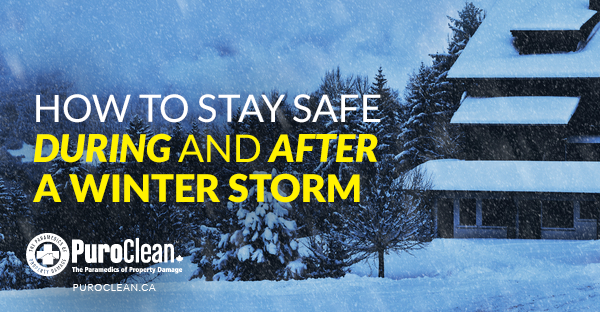The PuroClean Blog
How to Stay Safe During and After a Winter Storm
 When a blizzard strikes, it’s imperative to know how to act. This recent article provides information on how to prepare for a winter storm before it occurs. Below are several important guidelines on how to remain safe during and after a winter storm:
When a blizzard strikes, it’s imperative to know how to act. This recent article provides information on how to prepare for a winter storm before it occurs. Below are several important guidelines on how to remain safe during and after a winter storm:
- Going outside in the storm is not advised. If it’s necessary to go, snowy or icy paths should be walked on carefully. Individuals should wear appropriate clothing: layers of lightweight clothes, water repellent outer wear, a hat, mittens and a scarf.
- The best way to shovel snow is to lift smaller loads and take short brakes every few minutes. Wet clothes should be changed right away to prevent loss of body heat.
- In cases of cold temperature exposure, frostbite can be prevented by covering exposed skin. The affected area(s) should not be rubbed. Individuals who have lost feeling in extremities, such as fingers and toes, must seek shelter and medical help.
- Hypothermia is another danger when exposed to low temperatures. Symptoms include drowsiness, shivering, incoherence and memory loss. People who are experiencing hypothermia must be warmed up immediately and treated by a doctor.
- If stuck on the road in a vehicle and a safe location is visible or nearby, it is best to exit the vehicle and seek help in that location. The local transportation department will provide instructions on how to safely reach residential areas.
- If a home has lost power because of the storm, the people living in that home should consider staying at a designated public shelter, if no other options are available.
- After the storm has settled, individuals and families should think about ways they can improve their preparedness plan and what can be added to the emergency kit to get through the next winter storm more safely.
Heating equipment safety considerations should also be included in a winter storm preparedness plan. The PuroClean team stands ready to provide professional restoration services to any property affected by fire, water or mould damage.
Follow us on Twitter, Facebook, Google+ and LinkedIn to get our notifications!
January 14, 2016


